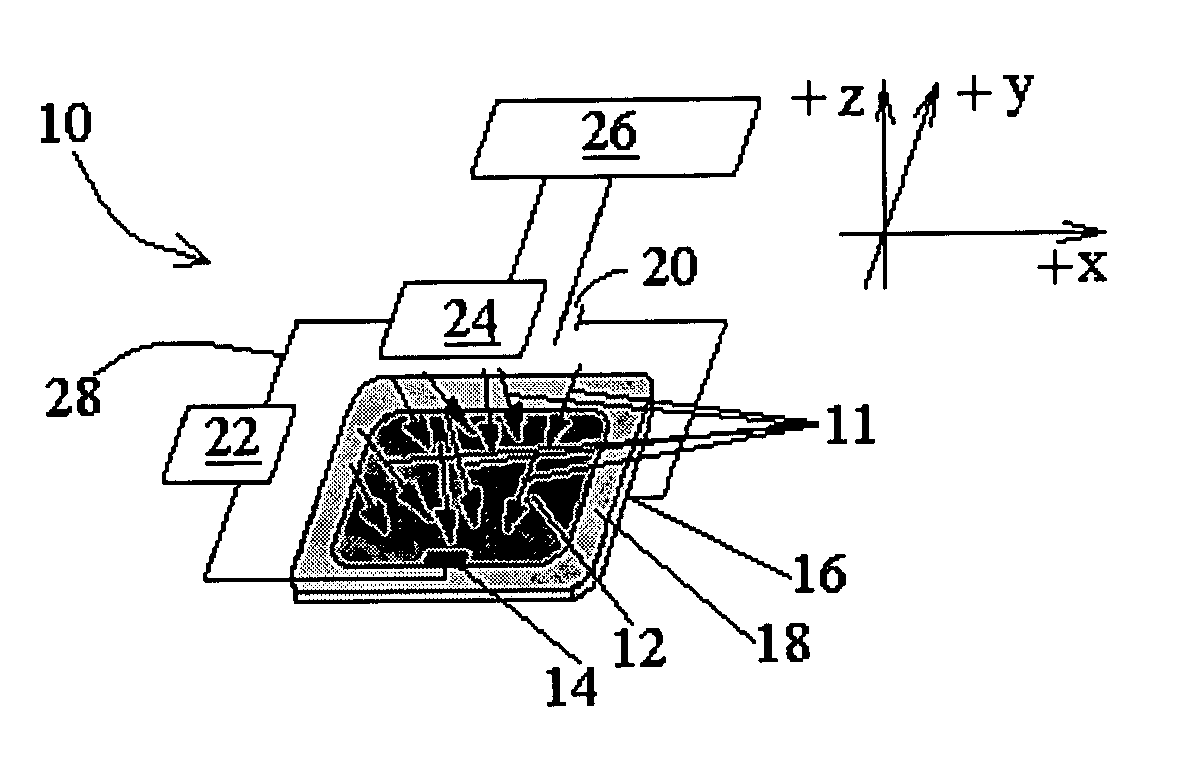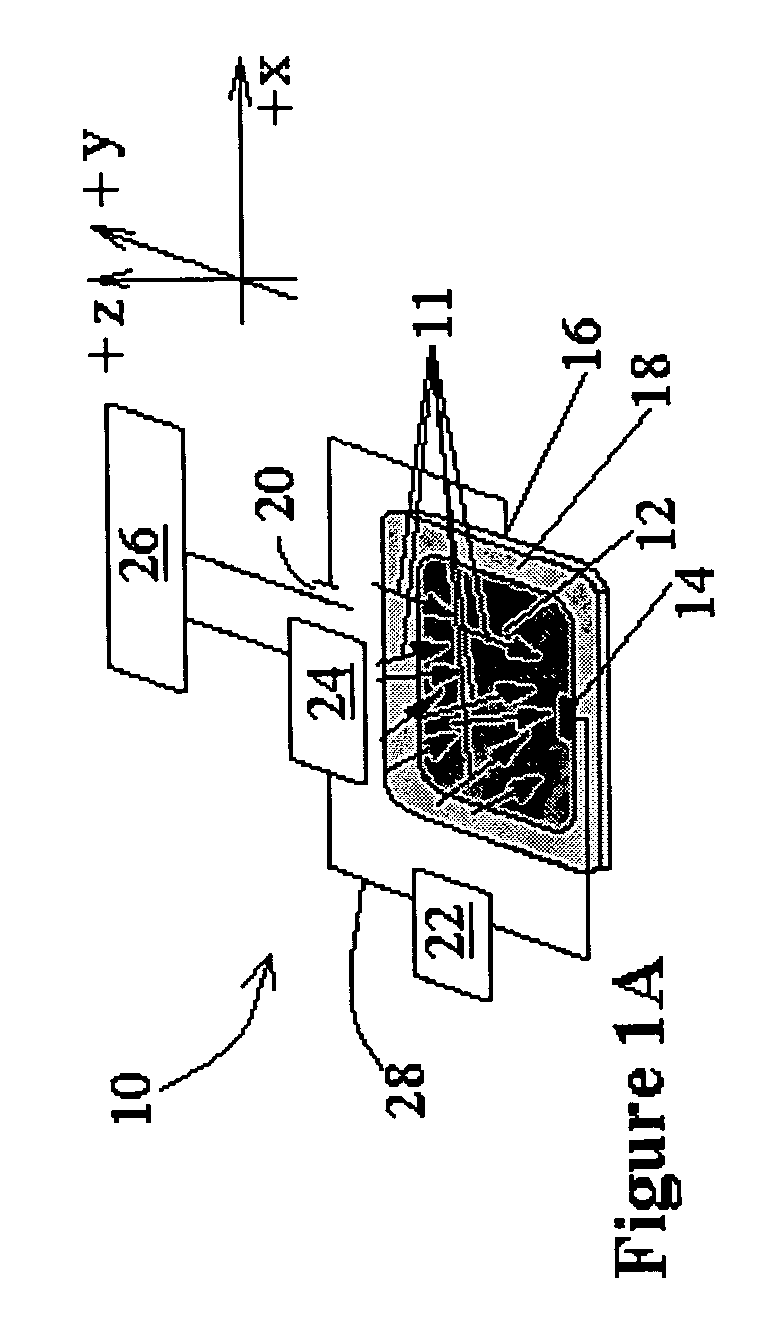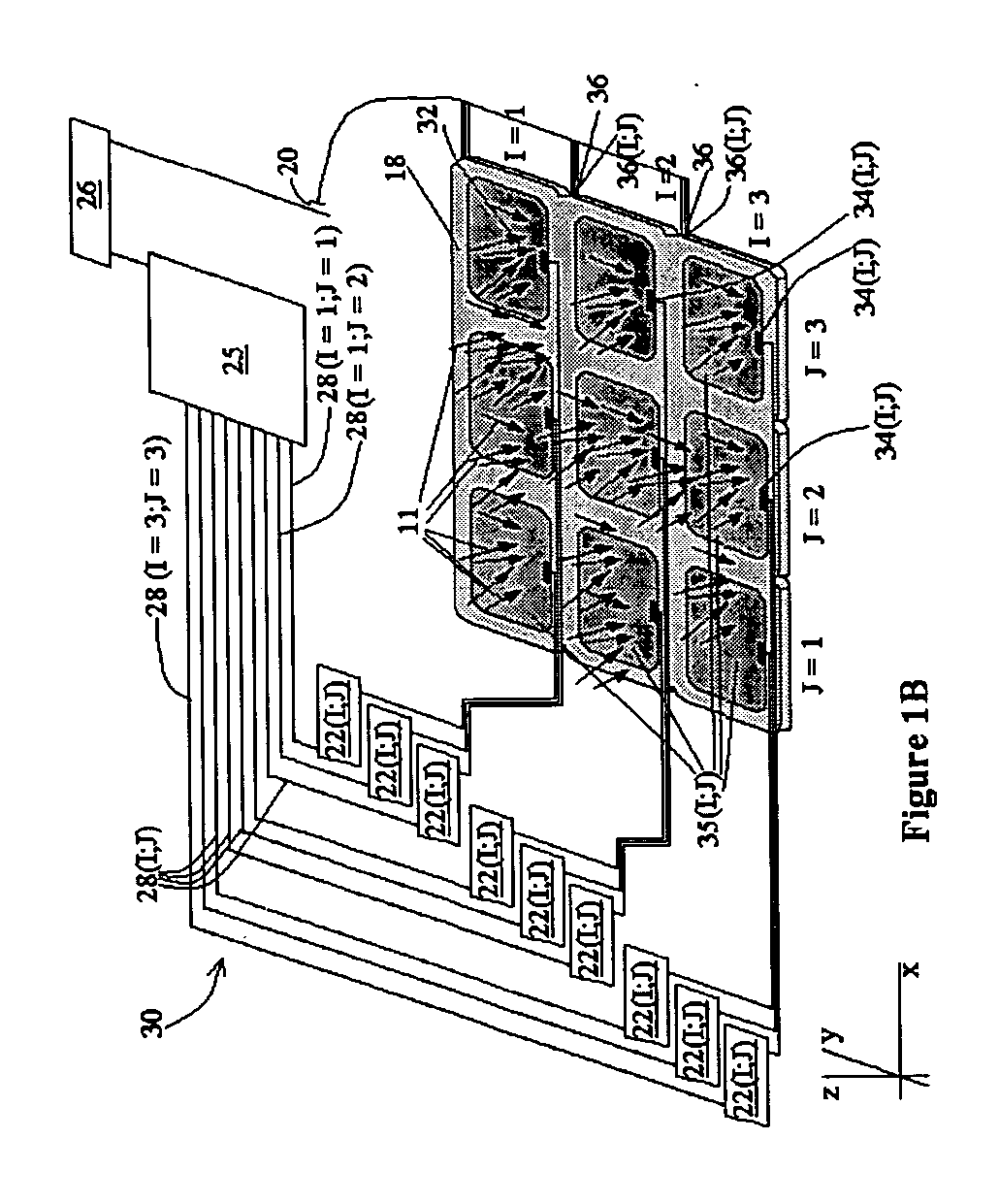Low-voltage, solid-state, ionizing-radiation detector
a detector and solid-state technology, applied in the direction of radiation measurement, instruments, electrical equipment, etc., can solve the problem of not providing information regarding the depth of penetration of incident radiation into the detector material, and achieve the effect of improving manufacturing flexibility, reducing operating voltage, and increasing detector safety
- Summary
- Abstract
- Description
- Claims
- Application Information
AI Technical Summary
Benefits of technology
Problems solved by technology
Method used
Image
Examples
first embodiment
[0073]FIG. 2A schematically illustrates a stratified, single-pixel, solid-state detector 40, in accordance with the present invention. The stratified, single-pixel, solid-state detector 40 comprises at least two, and preferably a plurality of solid-state-material layers 42(K), along the x;y plane of the x;y;z coordinate system, so as to form a stack 67. A layer thickness, in the z direction, may be between about 0.5 and 1 mm, yet, thinner layers may be used where practical to manufacture.
[0074] The solid-state-material layers 42(K) are arranged, for example, for detecting the ionizing radiation 11 incident on the x;y plane and have positive and negative electrode connections 44(K) and 46(K), respectively, wherein negative connections 46(K) may be common, and regarded simply as negative connections 46. Preferably, each of the solid-state-material layers 42(K) is surrounded by the insulation material 18. Preferably, each of the solid-state-material layers 42(K) is associated with a pr...
second embodiment
[0081]FIG. 2C schematically illustrates a single-pixel, solid-state detector 50, in accordance with the present invention, wherein layers 42(K) may be thought of as “depth pixels.” Accordingly, wires 28(K), associated with layers 42(K), lead to a multi-channel counter 25, wherein each layer 42(K) is assigned a channel. In this manner, information on the incident radiation energy may be obtained, since generally, the higher the incident radiation energy, the greater the depth of penetration into the detector material.
[0082] Each of the solid-state-material layers 42(K) may be, for example, a square, in the x;y plane, having sides of between about 3 mm and about 10 mm. It will be appreciated that other dimensions may similarly be used. It will be further appreciated that another polygon, a circle, or another geometrical shape may be used.
[0083] The solid-state-material layers 42(K) may be, for example, room temperature CdZnTe. Alternatively, CdTe, HgI, Si, Ge, or the like may be used...
PUM
 Login to View More
Login to View More Abstract
Description
Claims
Application Information
 Login to View More
Login to View More - R&D
- Intellectual Property
- Life Sciences
- Materials
- Tech Scout
- Unparalleled Data Quality
- Higher Quality Content
- 60% Fewer Hallucinations
Browse by: Latest US Patents, China's latest patents, Technical Efficacy Thesaurus, Application Domain, Technology Topic, Popular Technical Reports.
© 2025 PatSnap. All rights reserved.Legal|Privacy policy|Modern Slavery Act Transparency Statement|Sitemap|About US| Contact US: help@patsnap.com



